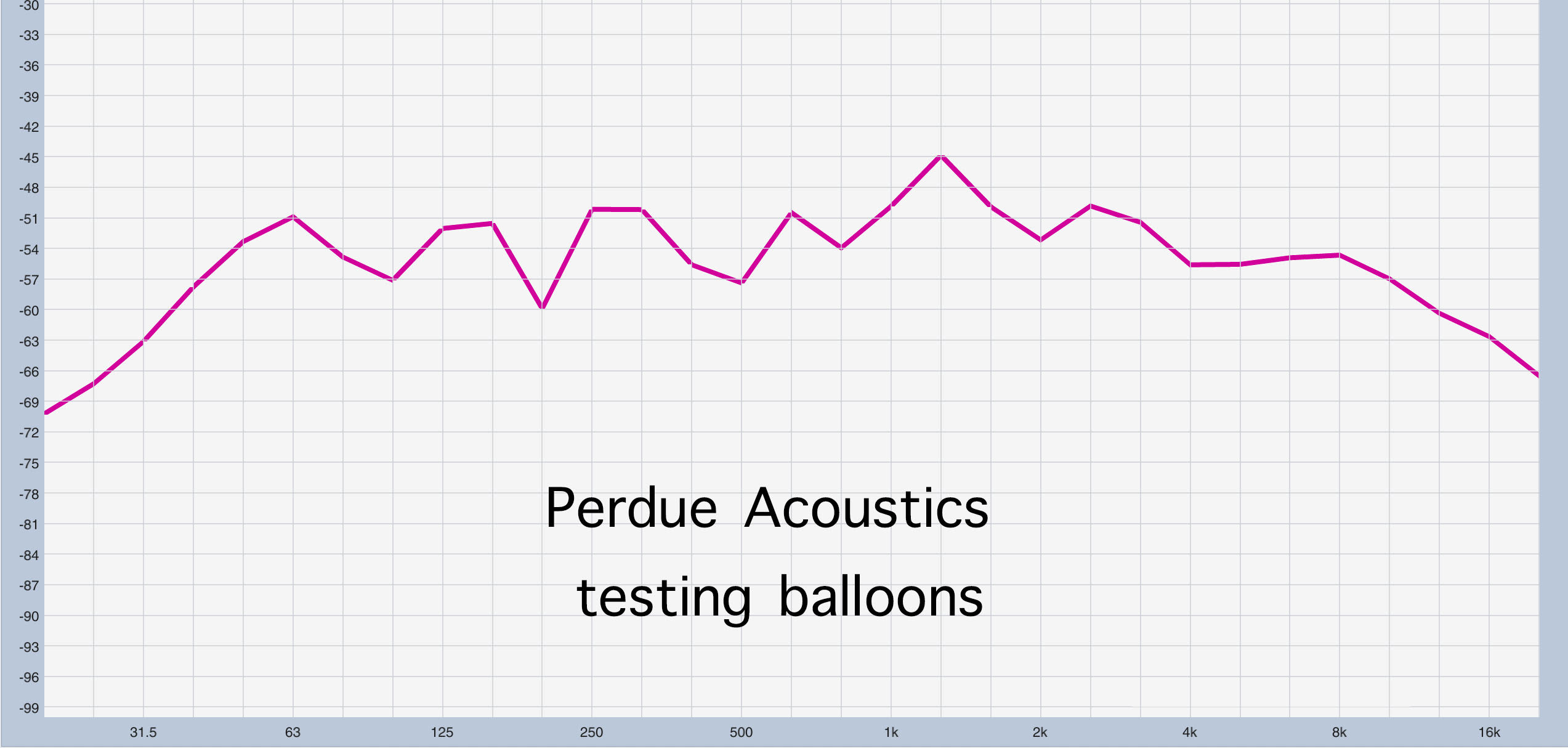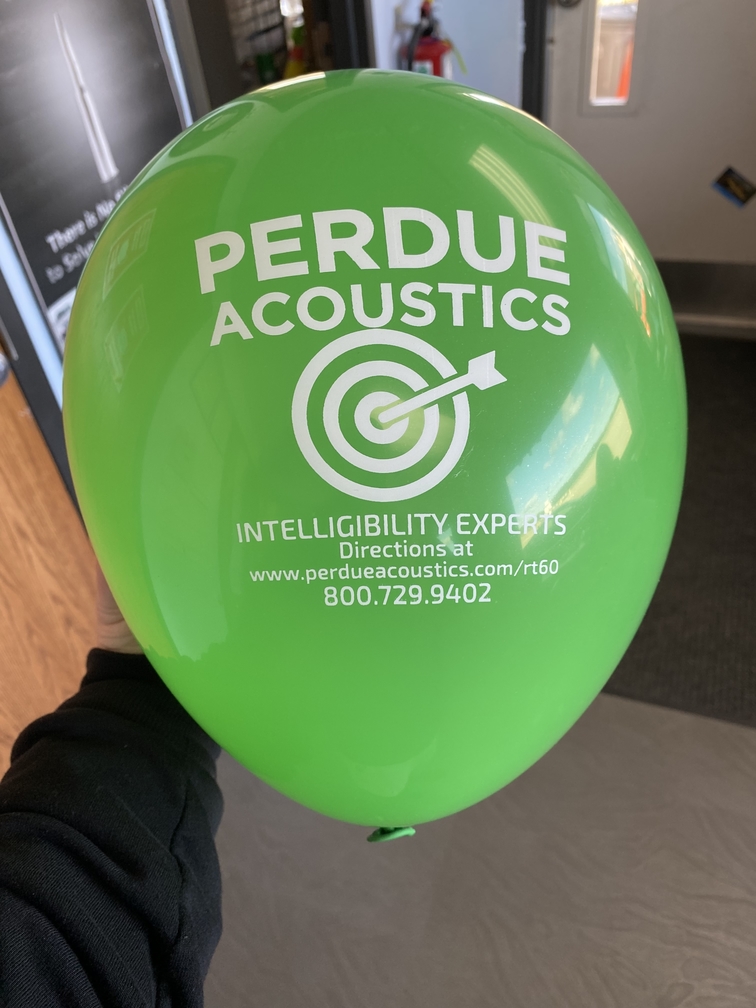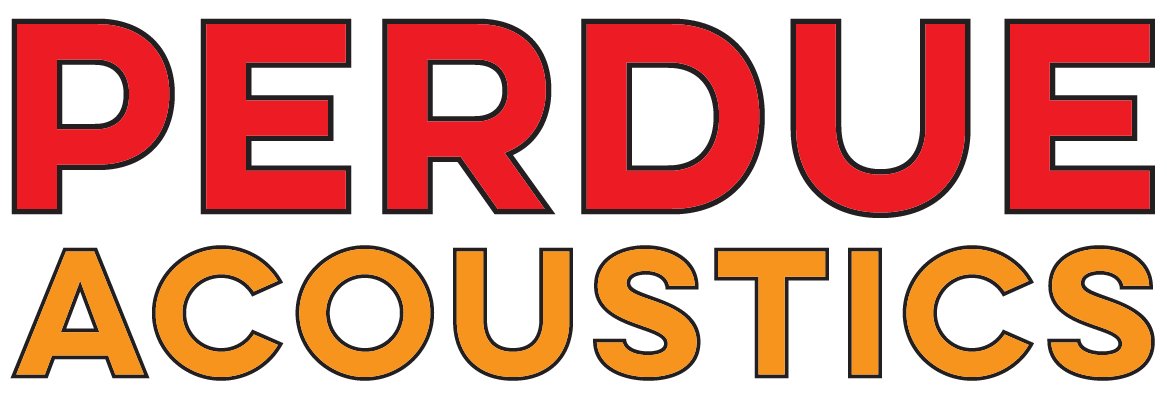Perdue Acoustics Impulse Response Kit
What is an impulse response?


Capturing an Impulse Response
Another tried and true method is to excite the room at all frequencies and analyze the recorded result. Some used a dedicated clapper device, starter pistols or a balloon pop as a source. For ease of use and cost reasons, we developed our balloon based Impulse Response kits.
There is quite a bit of information about using a balloon to capture the IR of a room. At Perdue Acoustics, we wanted to make sure that our kit was a both simple and effective. To figure out which balloons were best for testing, we built on the existing information by ordering and testing many sizes and colors of balloons. As it turns out, not only does the size of the balloon matter but the color does as well. Balloons with dark pigment tended to pop at a lower volume and more inconsistently. This testing led us to choose the balloons found in our test kits.

- It is important that the room be as quiet as possible while conducting the test. Turn off all air conditioning and heating systems and reduce background noise as much as possible.
- The balloon popper should be in the position of where the sound typically emanates from (stage, church platform). If the room does not have an emanation point (cafeterias, gyms), pop the balloon from the middle of the room. This person will pop all of the balloons from this same position.
- Prepare to capture sample. For best results, record 3-5 balloon pops from different locations. These locations should be spread around the facility (front, midway back, back, sides). Technically, there is a minimum distance you should be away from the balloon when capturing the sound, but don’t worry. We can get enough information from what you send us. You can use your phone to record the sample with either a voice memo app or just shoot video. Make sure that you are not covering the microphone on the phone. It is usually located on the bottom of the phone near the charging port. Do not stop the recording until all of the sound from the pop becomes silent in the room.
- Inflate the balloon to about 14” tall. The exact size is not extremely important but the closer to full inflation the better.
- Hold the balloon in front of you in the palm of your hand with the target pointing toward the ceiling. Make sure that the balloon is above your head and then pop it with the supplied pin. See the included videos for examples of how to hold the balloon and see the various locations.
- Email the samples, videos, and project information to RT60@perdueacoustics.com

(include video examples here. First the ones from the theater and then the ones from the cafeteria).

Examples:
Questions?
Send an email to rt60@perdueacoustics.com or call (800) 729 – 9402
